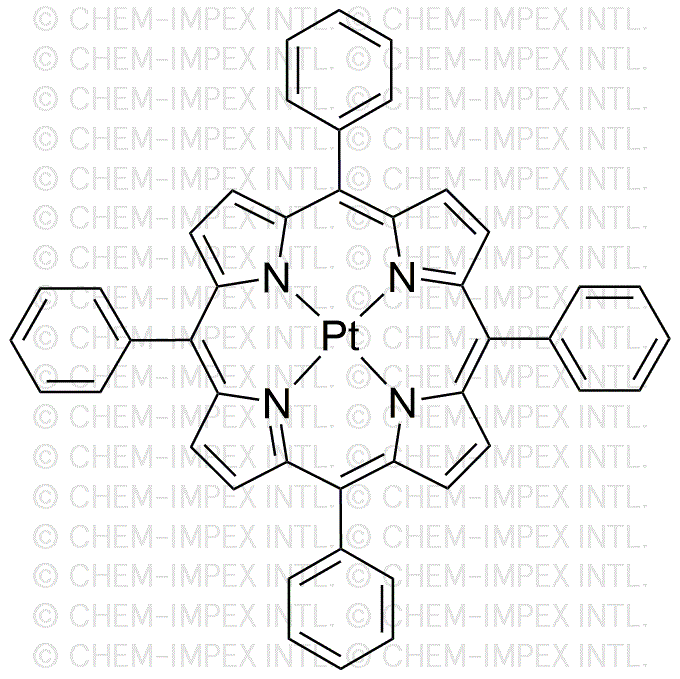Platinum(II) 5,10,15,20-(tetraphenyl)porphyrin is widely utilized in research focused on:
- Catalysis: This compound serves as a catalyst in various chemical reactions, particularly in organic synthesis, enhancing reaction rates and selectivity.
- Photodynamic Therapy: It is used in medical applications for treating cancer, where it helps to generate reactive oxygen species upon light activation, targeting and destroying cancer cells.
- Electrochemical Sensors: The compound is employed in the development of sensors for detecting biomolecules, offering high sensitivity and specificity, which is crucial in medical diagnostics.
- Solar Energy Conversion: It plays a role in dye-sensitized solar cells, improving the efficiency of light absorption and energy conversion, making renewable energy technologies more viable.
- Material Science: This chemical is used in the fabrication of advanced materials, such as conductive polymers and nanocomposites, which have applications in electronics and nanotechnology.
General Information
Properties
Safety and Regulations
Applications
Platinum(II) 5,10,15,20-(tetraphenyl)porphyrin is widely utilized in research focused on:
- Catalysis: This compound serves as a catalyst in various chemical reactions, particularly in organic synthesis, enhancing reaction rates and selectivity.
- Photodynamic Therapy: It is used in medical applications for treating cancer, where it helps to generate reactive oxygen species upon light activation, targeting and destroying cancer cells.
- Electrochemical Sensors: The compound is employed in the development of sensors for detecting biomolecules, offering high sensitivity and specificity, which is crucial in medical diagnostics.
- Solar Energy Conversion: It plays a role in dye-sensitized solar cells, improving the efficiency of light absorption and energy conversion, making renewable energy technologies more viable.
- Material Science: This chemical is used in the fabrication of advanced materials, such as conductive polymers and nanocomposites, which have applications in electronics and nanotechnology.
Documents
Safety Data Sheets (SDS)
The SDS provides comprehensive safety information on handling, storage, and disposal of the product.
Product Specification (PS)
The PS provides a comprehensive breakdown of the product’s properties, including chemical composition, physical state, purity, and storage requirements. It also details acceptable quality ranges and the product's intended applications.
Certificates of Analysis (COA)
Search for Certificates of Analysis (COA) by entering the products Lot Number. Lot and Batch Numbers can be found on a product’s label following the words ‘Lot’ or ‘Batch’.
*Catalog Number
*Lot Number
Certificates Of Origin (COO)
This COO confirms the country where the product was manufactured, and also details the materials and components used in it and whether it is derived from natural, synthetic, or other specific sources. This certificate may be required for customs, trade, and regulatory compliance.
*Catalog Number
*Lot Number
Safety Data Sheets (SDS)
The SDS provides comprehensive safety information on handling, storage, and disposal of the product.
DownloadProduct Specification (PS)
The PS provides a comprehensive breakdown of the product’s properties, including chemical composition, physical state, purity, and storage requirements. It also details acceptable quality ranges and the product's intended applications.
DownloadCertificates of Analysis (COA)
Search for Certificates of Analysis (COA) by entering the products Lot Number. Lot and Batch Numbers can be found on a product’s label following the words ‘Lot’ or ‘Batch’.
*Catalog Number
*Lot Number
Certificates Of Origin (COO)
This COO confirms the country where the product was manufactured, and also details the materials and components used in it and whether it is derived from natural, synthetic, or other specific sources. This certificate may be required for customs, trade, and regulatory compliance.


